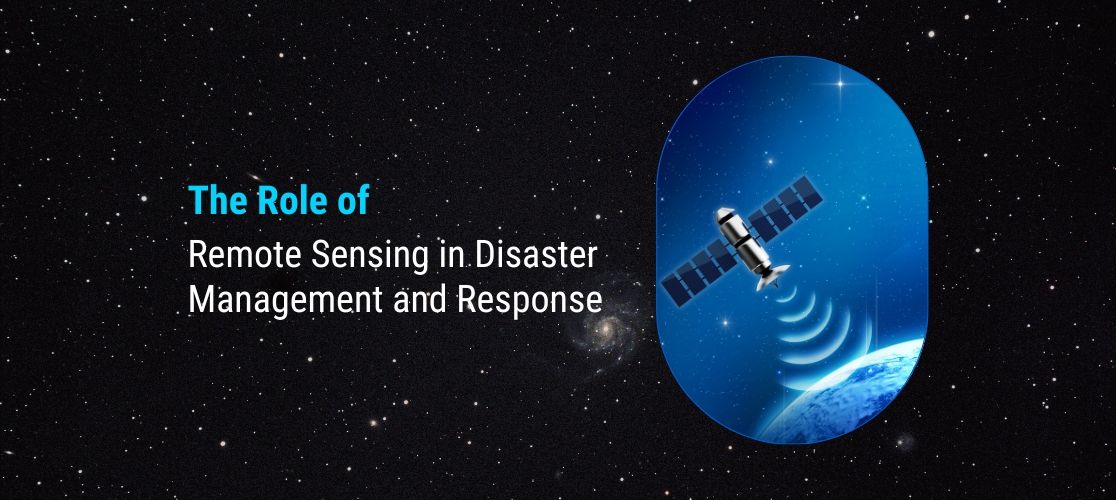21 April 2023
The Role of Remote Sensing in Disaster Management and Response

Disasters such as earthquakes, hurricanes, floods, and wildfires can cause widespread damage and devastation, disrupting lives, communities, and entire regions. In such situations, timely and effective disaster management and response are crucial to mitigate the impacts and save lives. Remote sensing, a technology that involves capturing and analysing data from a distance, can play a critical role in disaster management and response, particularly through satellite monitoring. In this article, we will explore the role of remote sensing in disaster management and response.
Situational Awareness
Remote sensing can provide a wealth of information about the disaster and its impacts, even in areas that are difficult or dangerous to access. This includes data on the extent and severity of the disaster, the affected population and infrastructure, and the ongoing and potential hazards. This information can help emergency managers and responders to gain situational awareness and make informed decisions about the allocation of resources, evacuation and sheltering, and the overall response strategy.
Rapid Damage Assessment
Remote sensing can also enable rapid damage assessment, which is crucial in the early stages of a disaster response. By analysing satellite imagery and other remote sensing data, emergency managers can quickly identify the areas that have been most severely impacted by the disaster, including damage to buildings, roads, bridges, and other critical infrastructure. This information can help to prioritise search and rescue efforts and guide the allocation of resources to the areas that need them most.
Search and Rescue
Remote sensing can also be used to support search and rescue efforts. For example, satellite imagery can help to identify areas where people may be trapped or stranded, or where there may be potential hazards such as flooded areas or landslides. This information can be used to guide the deployment of search and rescue teams and ensure that they are directed to the areas where they are most needed.
Hazard Assessment and Monitoring
Remote sensing can also support hazard assessment and monitoring, which is crucial in the aftermath of a disaster. For example, satellite imagery can be used to identify areas that are at risk of flooding or landslides, or to monitor the progression of wildfires. This information can be used to guide response efforts and help to mitigate the impacts of the disaster.
Decision Support
Finally, remote sensing can provide decision support to emergency managers and responders. By analysing satellite imagery and other remote sensing data, emergency managers can make informed decisions about resource allocation, evacuation and sheltering, and the overall response strategy. This can help to ensure that response efforts are coordinated and effective, and that resources are allocated to the areas that need them most.
In conclusion, remote sensing, particularly through satellite monitoring, can play a critical role in disaster management and response. It can provide situational awareness, enable rapid damage assessment, support search and rescue efforts, facilitate hazard assessment and monitoring, and provide decision support to emergency managers and responders. While remote sensing is not a panacea for disaster management and response, it can provide valuable insights and information that can help to mitigate the impacts of disasters and save lives. As such, it is important to continue to develop and refine this technology to ensure that it is effective and accessible to emergency managers and responders around the world.
